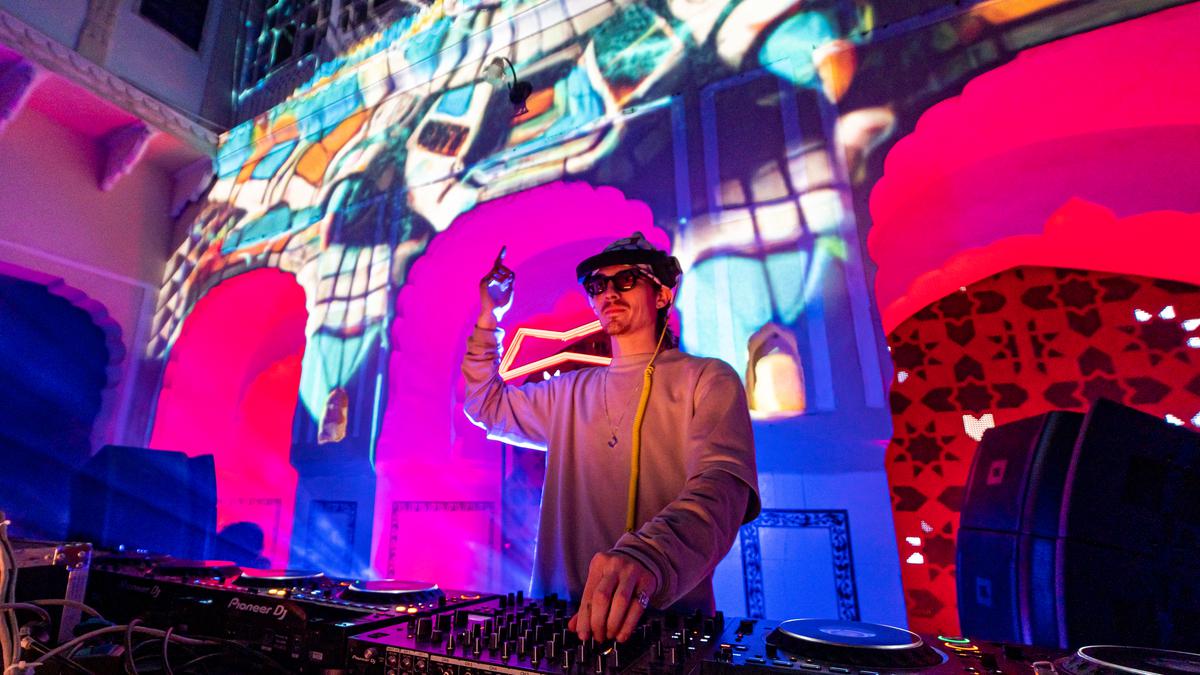
Magnetic Fields 2023: many avatars of electronic music at a three-day festival in Rajasthan’s desert
The Hindu
At Magnetic Fields, left-field music and by-the-book techno took centrestage in a 17th Century, battle-hardened fort in Rajasthan. We spent three days and partied with 6,000 people in a camp cloaked by cold winds and electronic beats
As the sun goes down lending its waning, soft glow through stained glass windows, past ornate frescoes and grand courtyards, Rajasthan’s Alsisar Mahal transforms into a picture of serendipity. It leaves no hints whatsoever to the night that is to come, when hard techno will reverberate through the hallowed halls of the fort, which was rebuilt in 1954 after a bombing by the British.
Atop Badal Mahal — within the fort — characterised by its domes, an international music producer and DJ based in Delhi, Alboe, plays his quintessential blend of Indian sounds and electronic music. A soothing, perfect end to the day. Past serpentine stairways dotted with miniature paintings, at the Durbar Hall, is Rajasthani folk musician Moti Khan effectively stirring up a storm as a captivated audience transforms the hallowed space into an unlikely dance floor. At Magnetic Fields, every nook serves up a surprise. But one must be ready to rough it out in ‘bedouin tents’ sans insulation and sometimes, running hot water.
In its 11th edition, the recently concluded contemporary arts and music festival saw 6,000 people take over Alsisar Mahal for three warm days and (more so) extremely chilly nights. The festival is known for electronic and left-field soundscape, and this year was no different. Over seven stages inside Alsisar Mahal which is now a heritage hotel run by the eighth generation of Alsisar’s Shekhawati clan, and a designated camping area barely 100 metres away, the festival managed to draw in a mix of crowds: from loyal followers of electronica and first-time way finders to seasoned club crowds.
This year, however, the festival had its fair share of highlights: Melbourne-based Glass Beams’ almost hypnotic set saw a massive turnout at the large lawn-turned-stage called the Jameson Connects South Stage, and was a soothing blend of eastern scales inspired by the group’s South Asian descent.
The (bejeweled) masked trio calls their brand of music “serpentine psychedelia”. Their physicality on stage (the bassist glides as he plays), somehow, stayed true to their brand and had the crowd in a trance. In stark contrast was DJ ADHD. The UK music producer’s club music, which blurs the lines of techno and bass, had crowds spilling out of a massive courtyard inside the Haveli on the BudX North Stage. It was funky, fresh, and complimented the projection mapping that took over the facade which otherwise is a roadmap to 17th Century Rajputana architecture.
Often referred to as the ‘poster child of Indian electronica’, Dualist Inquiry introduced the audience to his upcoming album, which deliberates on childhood, life, love and fatherhood. The stunning custom visuals forming the core of his soundscape featured surprising guitar interludes. Hard techno aside, left-field acts like that of Zequenx were a deviation from the norm for loyalists of the genre.
The Durbar Hall which houses grand portraits of the members of the erstwhile royal family of Alsisar on its walls, also hosts Hindustani classical musicians on its stage. Though the festival’s curation weighed heavily on contemporary music, classical and folk acts also drew earnest crowds in large numbers.













